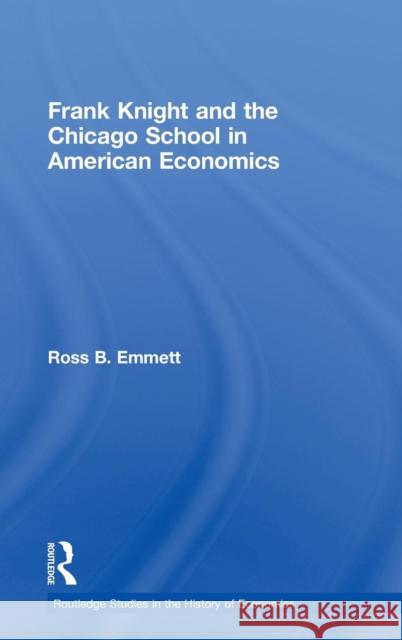Frank Knight and the Chicago School in American Economics » książka
Frank Knight and the Chicago School in American Economics
ISBN-13: 9780415775007 / Angielski / Twarda / 2009 / 256 str.
Frank Knight and the Chicago School in American Economics
ISBN-13: 9780415775007 / Angielski / Twarda / 2009 / 256 str.
(netto: 718,58 VAT: 5%)
Najniższa cena z 30 dni: 730,42
ok. 22 dni roboczych.
Darmowa dostawa!
Over the last twenty years, Ross B. Emmett has explored the work of Frank H. Knight, the philosopher of the Chicago School of economics. Knight occupies a paradoxical place in the history of Chicago economics: vital to the tradition's teaching of price theory and the twentieth-century re-articulation of the defense of free enterprise and liberal democracy, yet a critic (in advance) of the empirical and methodological orientation that has characterized Chicago economics and the rest of the discipline in the post-war period, and skeptical of liberalism's prospects. In the course of his investigation of Knight's work, Emmett has written not only about Knight's economics and philosophy, the nature of Chicago economics, and Knight's place in the Chicago tradition, but also about the application of hermeneutic theory to the history of economics, the relation of the history of economic thought to the discipline of economics, and the relation between economics and religion. His eight-volume collection of primary-source material on The Chicago Tradition in Economics, 1892-1945 was published by Routledge in 2001.
Sport heritage is increasingly being recognised as a potent instigator of tourism; be it touring a historic stadium, visiting a sports hall of fame, or participating in a sport fantasy camp, tourists now have a vast array of locations and options to experience the sporting past. This book provides the first comprehensive resource on sport heritage as a tourist attraction. Using theoretical and applied studies from researchers in the United Kingdom, the Netherlands, Canada, the United States, Australia, and New Zealand, this book finds that the sporting past is a key component in tourism’s future.
The convergence of heritage, sport and tourism involves many different and diverse fields, including sport tourism, heritage tourism, sport management, and sports geography. This book will serve the needs of students, researchers, industry practitioners in these fields, as well as those interested in sport heritage as a tourist attraction.
This book was first published as a special issue of the Journal of Sport Tourism.











